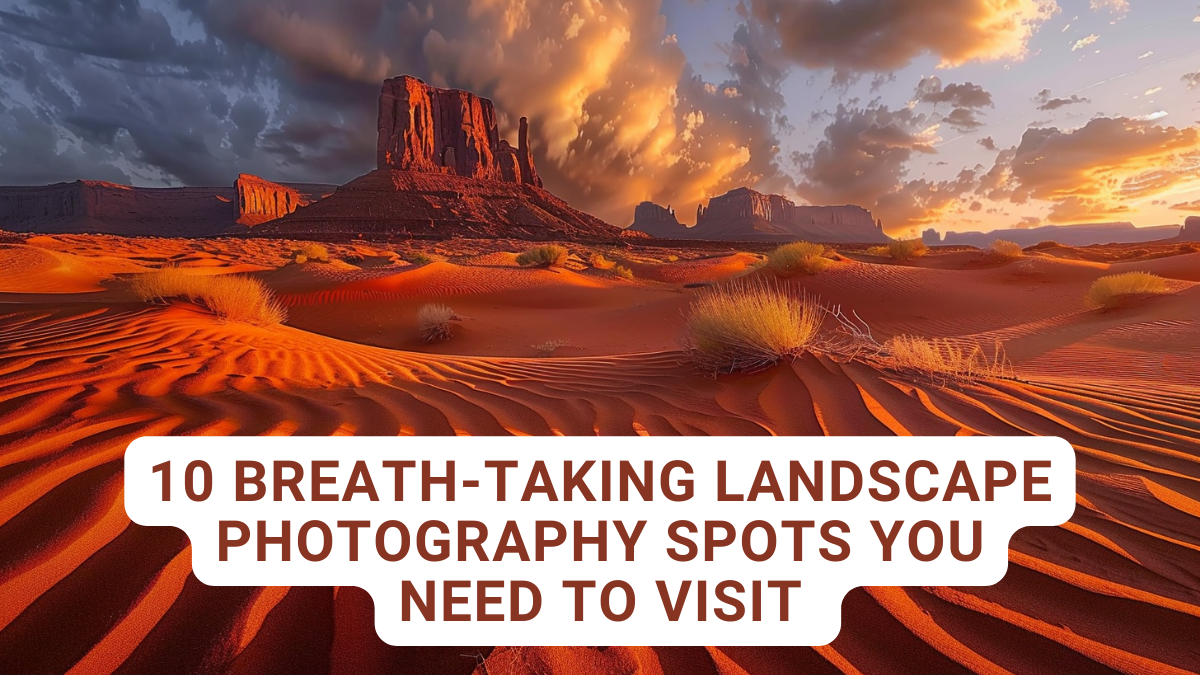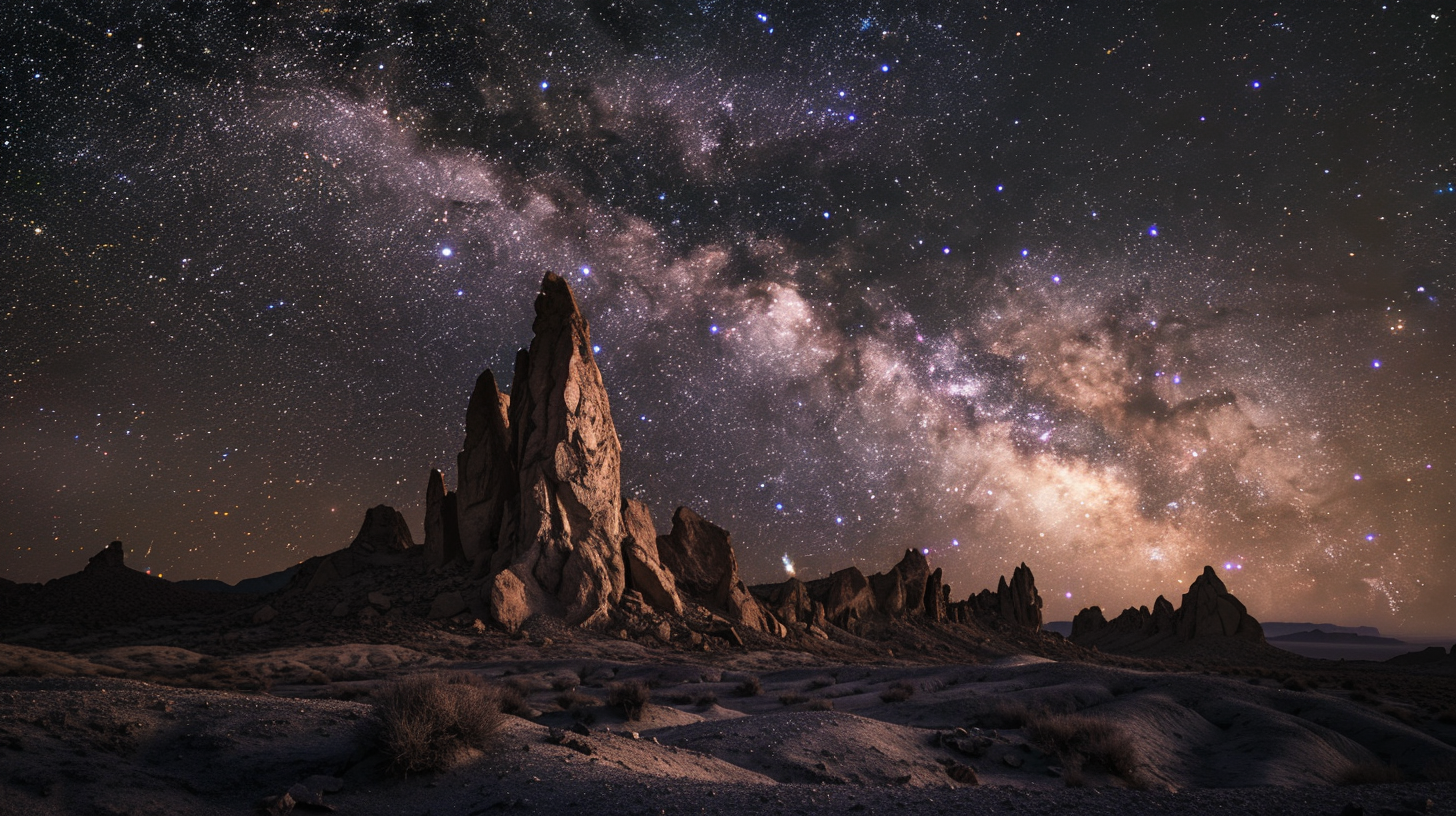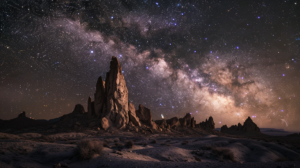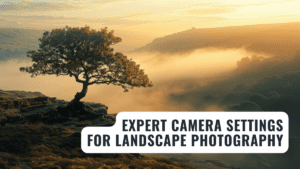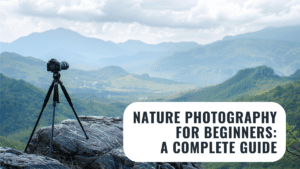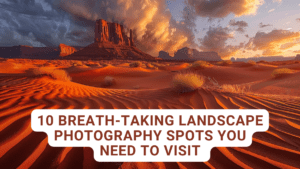The Quest for the Ultimate Landscape Photography Spots
Landscape photography is more than just capturing scenery; it’s about immortalizing the ephemeral interplay of light, land, and sky. It requires not only skill and patience but also an innate sense of wonder and exploration. Selecting the right location is paramount, as it not only determines the backdrop of your shot but also the story you tell. This guide unveils ten breathtaking spots that promise not just stunning photos, but transformative experiences. Each location is a gateway to capturing the majestic beauty of our planet, offering unique challenges and rewards to the intrepid photographer.
1. Banff National Park, Canada
Nestled in the heart of the Canadian Rockies, Banff National Park is a paradise for landscape photographers. From the turquoise waters of Lake Louise to the rugged peaks of Moraine Lake, the park offers a diverse array of breathtaking vistas.
Pro Tips: Visit during the early morning to capture the serene beauty of the lakes with mirror-like reflections. The golden hour brings a warm glow to the mountain peaks, offering a perfect backdrop for majestic landscape shots.
2. Patagonia, Argentina & Chile
Patagonia’s dramatic landscapes span Argentina and Chile, offering a mix of glaciers, mountains, and steppes. The region’s remote beauty makes it a sought-after spot for capturing untouched wilderness.
Pro Tips: Use a wide-angle lens to capture the vastness of the landscapes. The unpredictable weather can offer unique lighting conditions, so be ready to capture dramatic cloud formations and sudden rainbows.
3. Lofoten Islands, Norway
The Lofoten Islands are renowned for their rugged coastlines, Northern Lights, and quaint fishing villages. The unique Arctic light offers exceptional conditions for landscape photography.
Pro Tips: Winter visits offer the magical aurora borealis as a backdrop. Long exposures can capture the surreal beauty of the lights against the snow-covered landscapes. Use a sturdy tripod to combat the winds and secure sharp images.
Recommended Equipment for Each Type of Landscape
To truly capture the spirit of the world’s varied landscapes, having the right photography gear is not just helpful—it’s essential. Here’s a guide to the basic equipment that can help you bring back stunning images from your travels:
Cameras: For landscape photography, the choice of camera can make a big difference. Full-frame DSLRs and mirrorless cameras are favored for their wide dynamic range and superior performance in low light. The Nikon D850 and the Sony A7R series stand out as top choices, offering high resolution and robust build quality, ideal for capturing the vastness and detail of landscapes.
Lenses: The lens you choose can dramatically alter the perspective of your landscape shots. A wide-angle lens, typically around 14-24mm, is perfect for capturing sweeping vistas, allowing you to include more of the scene in your frame. For those far-off details or wildlife that often accompany landscapes, a telephoto lens, like a 70-200mm, becomes invaluable. And don’t overlook the versatility of a fast prime lens, around 50mm, especially when light conditions are less than ideal.
Tripods: Stability is key in landscape photography, particularly for those dawn and dusk shots that require longer exposures. A reliable tripod is indispensable. You’ll want something that’s sturdy enough to withstand winds and uneven terrain but light enough to carry on your adventures. The ability to adjust quickly and securely is also a must.
Additional Gear: Enhancing your shot with the right accessories can turn a good photo into a great one. Polarizing filters, for instance, can cut through glare to bring out the blues of the sky or the greens of foliage, adding depth and contrast to your images. A remote shutter release is another simple tool that can prevent camera shake during those critical long exposures.
Pairing the right gear with a keen understanding of how to use it in various settings is what brings out the true essence of landscape photography. It’s not just about the high-quality equipment you carry; it’s about leveraging that gear to its fullest potential, capturing moments that resonate with the beauty of our world.
As we journey through some of the planet’s most photogenic locales, remember: each offers a unique chance to hone your skills, pushing the boundaries of what you can achieve with your camera. With thoughtful preparation and the right equipment, these landscapes become more than just destinations; they’re your canvas, waiting to be transformed into art that captures the breathtaking diversity of nature.
4. Yosemite National Park, USA
Famous for its towering granite cliffs, ancient sequoias, and cascading waterfalls, Yosemite National Park is a landscape photographer’s dream. The park’s diverse landscape offers endless photographic opportunities throughout the year.
Pro Tips: Capture the iconic Tunnel View at sunrise for a breathtaking shot of El Capitan, Bridalveil Fall, and Half Dome in the morning light. Spring is ideal for waterfall photography, as the snowmelt leads to powerful flows.
5. Iceland
Iceland’s otherworldly landscapes offer everything from volcanic fields and ice caves to towering waterfalls and aurora skies. It’s a dynamic canvas for photographers seeking both adventure and awe-inspiring shots.
Pro Tips: For capturing the Northern Lights, visit between September and March and use long exposure settings. Summer months offer the midnight sun, providing 24 hours of daylight for extended photography sessions.
6. Fiordland National Park, New Zealand
New Zealand’s Fiordland National Park is a spectacle of sheer cliffs, dense rainforests, and fjords carved by glaciers. It’s a pristine wilderness that encapsulates the dramatic beauty of the South Island.
Pro Tips: Take a boat trip on Milford Sound during the golden hour for spectacular light on the cliffs and waterfalls. A tripod and neutral density filters will help capture the movement of water under changing light conditions.
7. Sahara Desert, Africa
The Sahara, the world’s largest hot desert, offers more than just vast dunes. Its landscapes include salt flats, rock formations, and oases, providing a stunning variety of desert scenes to photograph.
Pro Tips: The best time for photography is early morning or late afternoon when the low sun casts dramatic shadows on the dunes. Telephoto lenses can capture the mirage effect on the horizon.
8. The Scottish Highlands, Scotland
The Scottish Highlands are known for their rugged beauty, with misty mountains, lochs, and ancient castles. The ever-changing weather adds a mystical element to the landscapes.
Pro Tips: Use the dynamic Scottish weather to your advantage to capture dramatic skies and changing lights. A graduated ND filter can help balance the exposure between the sky and the land.
9. The Great Barrier Reef, Australia
While not a traditional landscape, the underwater world of the Great Barrier Reef is teeming with colorful marine life and coral landscapes. It’s a unique challenge for photographers.
Pro Tips: Underwater photography requires specific equipment like waterproof housings and strobes. Wide-angle lenses are best for capturing the expansive coral landscapes and the multitude of life they support.
10. Antelope Canyon, USA
Located on Navajo land in Arizona, Antelope Canyon is a slot canyon known for its wave-like structure and the light beams that shine down in the narrow openings, creating a surreal landscape.
Photography Tips: Visit midday when the sun is overhead to capture the famous light beams. A tripod is a must for long exposure shots that highlight the textures and colors of the canyon walls.
Best Times of Day for Landscape Photography in Each Spot
Landscape photography is as much about capturing light as it is about framing mountains and valleys. The right light can turn a beautiful scene into something unforgettable. Here’s how the time of day plays a pivotal role in painting landscapes with natural light, across a selection of iconic locations.
Morning Golden Hour: The early hours after sunrise offer a soft, glowing light that can transform landscapes into scenes of tranquil beauty. In places like Yosemite, Banff, and Fiordland, the light drapes itself over the terrain, softening edges and enriching colors. Yosemite’s towering cliffs catch the first rays of light, Banff’s reflective lakes capture the sky’s changing colors, and Fiordland’s rainforests and fjords are gently illuminated, offering a serene start to the day.
Midday Sunlight: When the sun is highest in the sky, it brings out the bold contours and vibrant colors of landscapes. Antelope Canyon is a prime example, where the overhead sun filters down through narrow openings, spotlighting the textured sandstone walls in brilliant oranges and reds. This is a moment when the sun’s directness reveals the intricate details of the natural world.
Evening Golden Hour: As the day draws to a close, the light softens again, casting a warm, golden glow. This is especially magical in places like Patagonia and the Lofoten Islands, where the landscape seems to come alive with color. The low sun accentuates the rugged textures of Patagonia’s mountains and the peaceful serenity of the Lofoten Islands, offering a quiet moment to reflect on the day’s end.
Night and the Northern Lights: In the far reaches of Iceland and the Lofoten Islands, the night sky isn’t just a backdrop for stars; it’s a stage for the Northern Lights. The auroras offer a shifting, dancing light show that contrasts with the dark sky, turning night photography into an opportunity to capture one of nature’s most mesmerizing displays.
Understanding these shifts in light can greatly enhance the way we capture landscapes. Each time of day offers its own mood and challenges, encouraging photographers to engage deeply with their surroundings. It’s not just about the technical aspects of photography but about experiencing and sharing the beauty of the world through a lens, one light-filled moment at a time.
Final Thoughts: Ready, Set, Shoot!
Embarking on a landscape photography journey is an adventure that goes beyond just taking pictures. It’s about experiencing the world in its most raw and beautiful forms. The destinations listed offer a variety of landscapes that challenge and reward photographers of all levels. Preparation is key: understand your equipment, research your locations, and respect nature’s conditions. With these tips and locations in mind, you’re well on your way to capturing the breathtaking beauty of our planet.
Are there any landscape photography spots you believe should have made the list? Share your thoughts and join the conversation below. Don’t forget to subscribe for more content, check out our recommended photography workshops, and follow us on social media to stay updated on all things photography.
